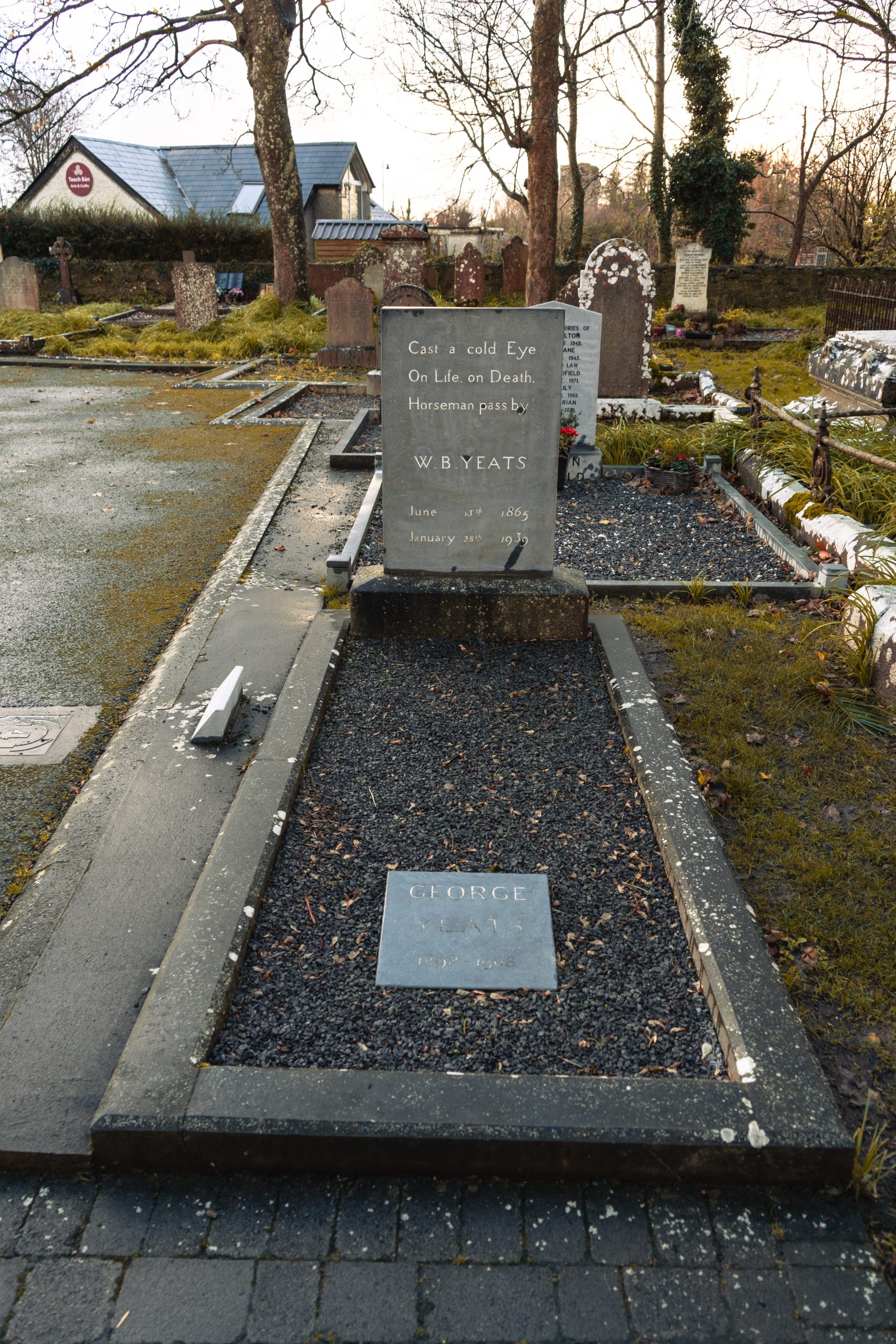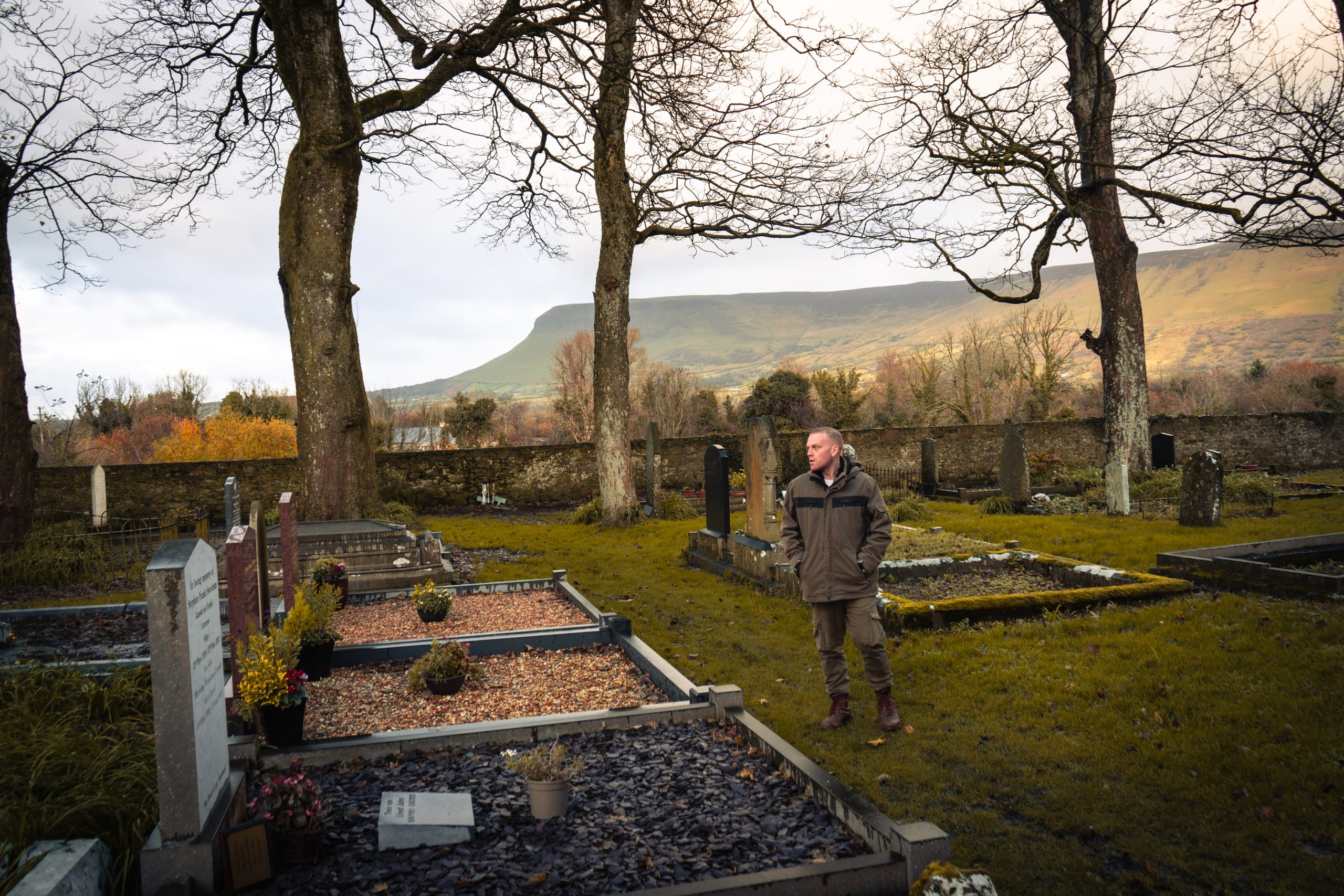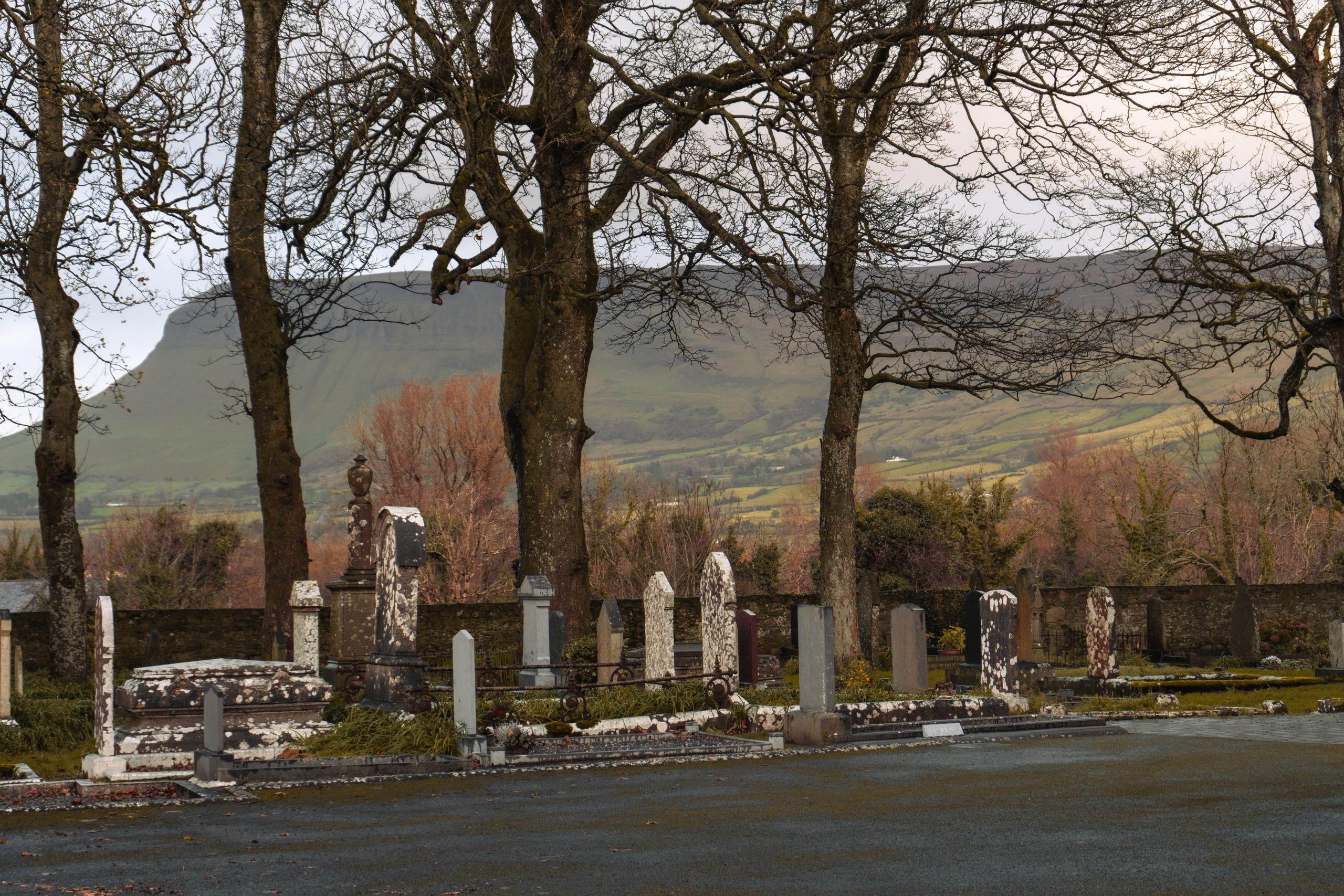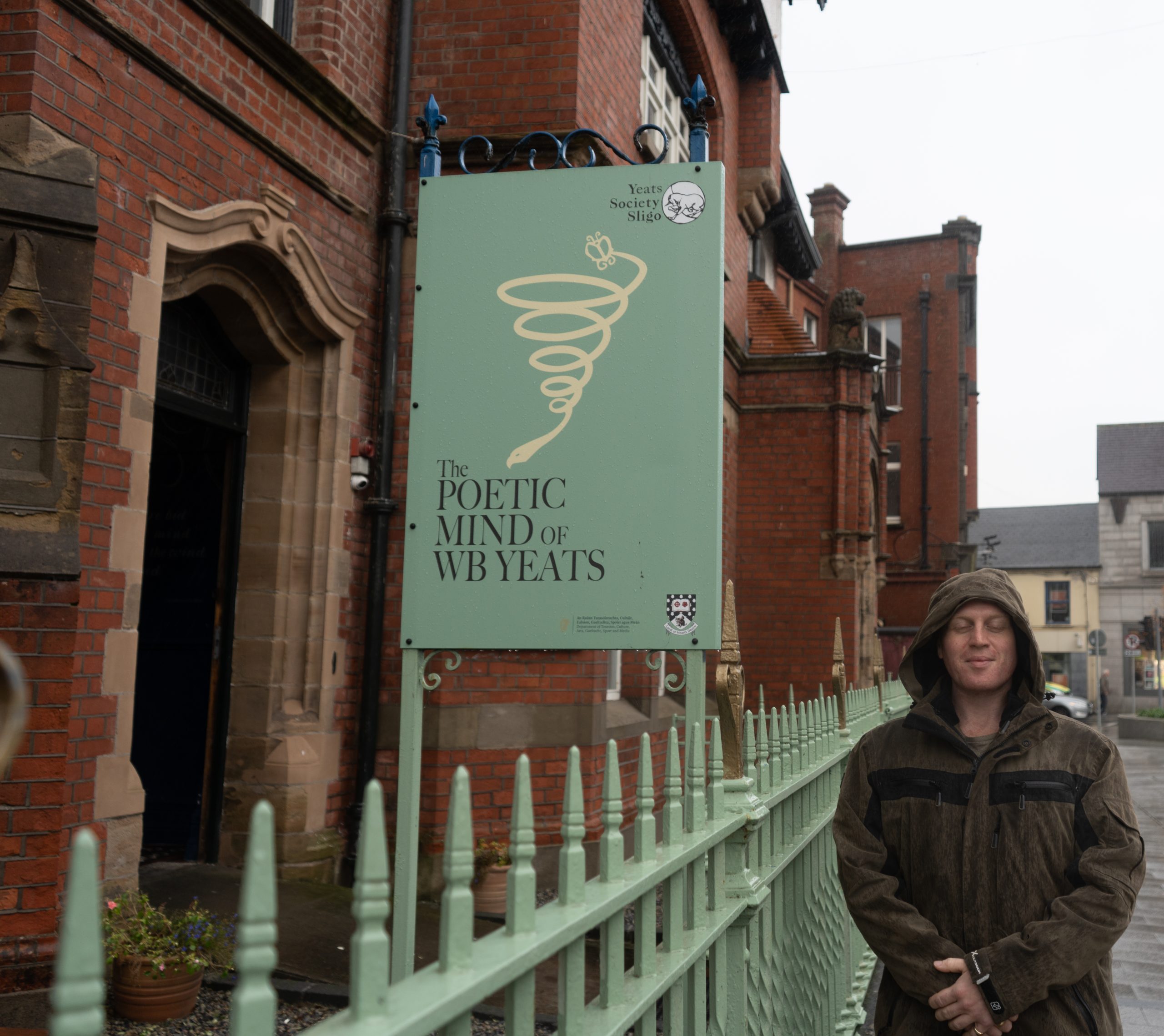It is Saturday 18th November, 2023, and we are on a short trip to Sligo and the Wild Atlantic Way. Today I am following the W. B. Yeats trail with The Son ... and there seems to be a Yorkshire connection! I told the woman who sold us tickets for the Yeats Society Poetic Mind exhibition, and who gave us a quick tour, that a few generations ago my ancestors lived in Sligo but moved to Yorkshire. She replied: "Well the Yeats came from Yorkshire"! The name 'Yeats' was then more common in Yorkshire it seems. It has been presumed that his ancestor Jervis Yeats (formally Yeates) was a native of my county of birth; I was born in Leeds and once played at 'Yates' Wine Lodge there! Indeed, Jervis Yeates is said to have left sums of money to two aunts, Sarah Barnes of Yorkshire, and Dorothy Westnage of Turbeck near Sheffield. Not a lot of people know that.
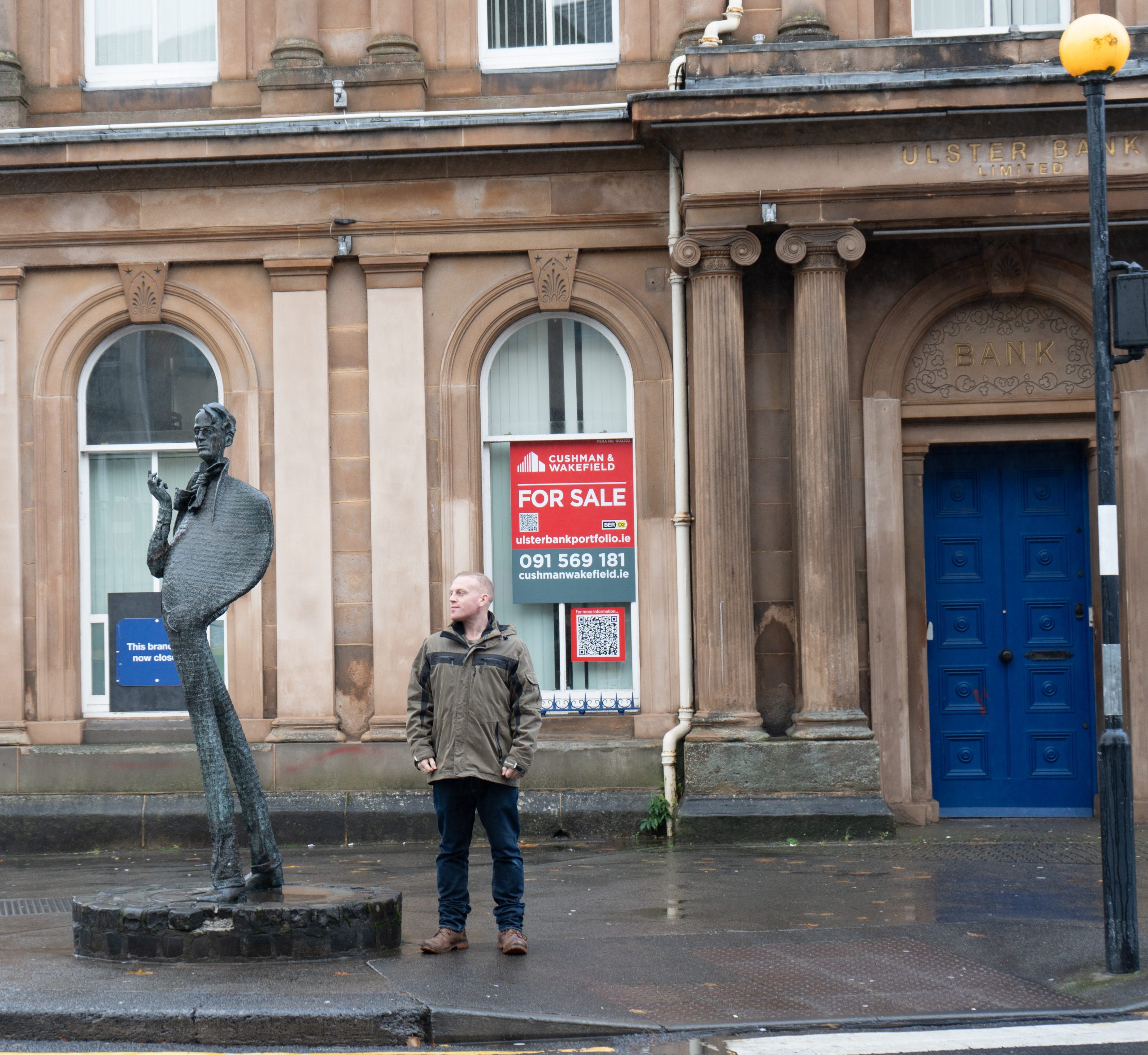
Bronze statue erected in front of the Ulster Bank building, Stephen Street, in May 1990.
"The eight-foot tall statue combined a realistic image of the internationally acclaimed poet with an abstract body, and was imprinted in positive relief with "cuts" from more than 150 of his poems." Irish Independent
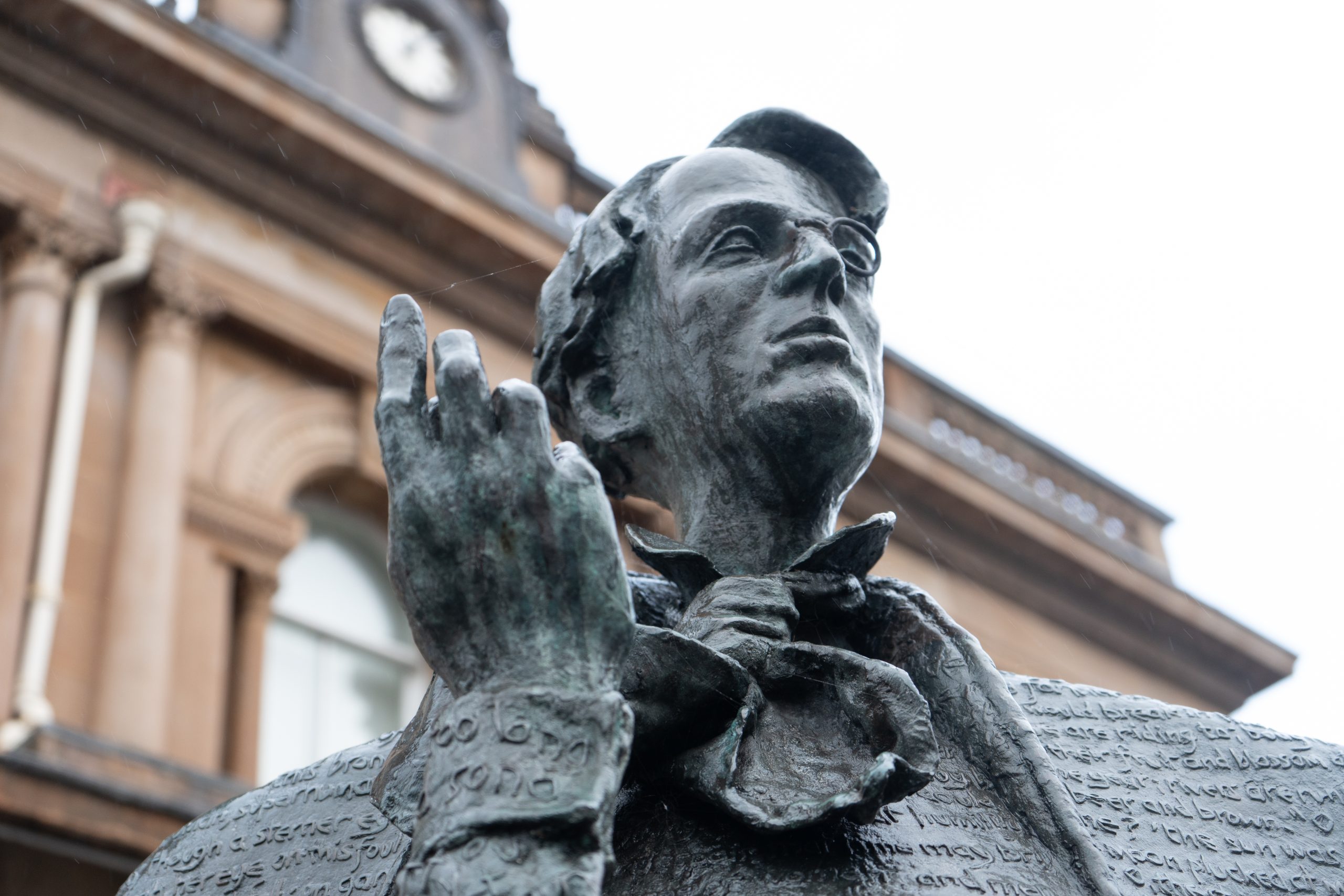
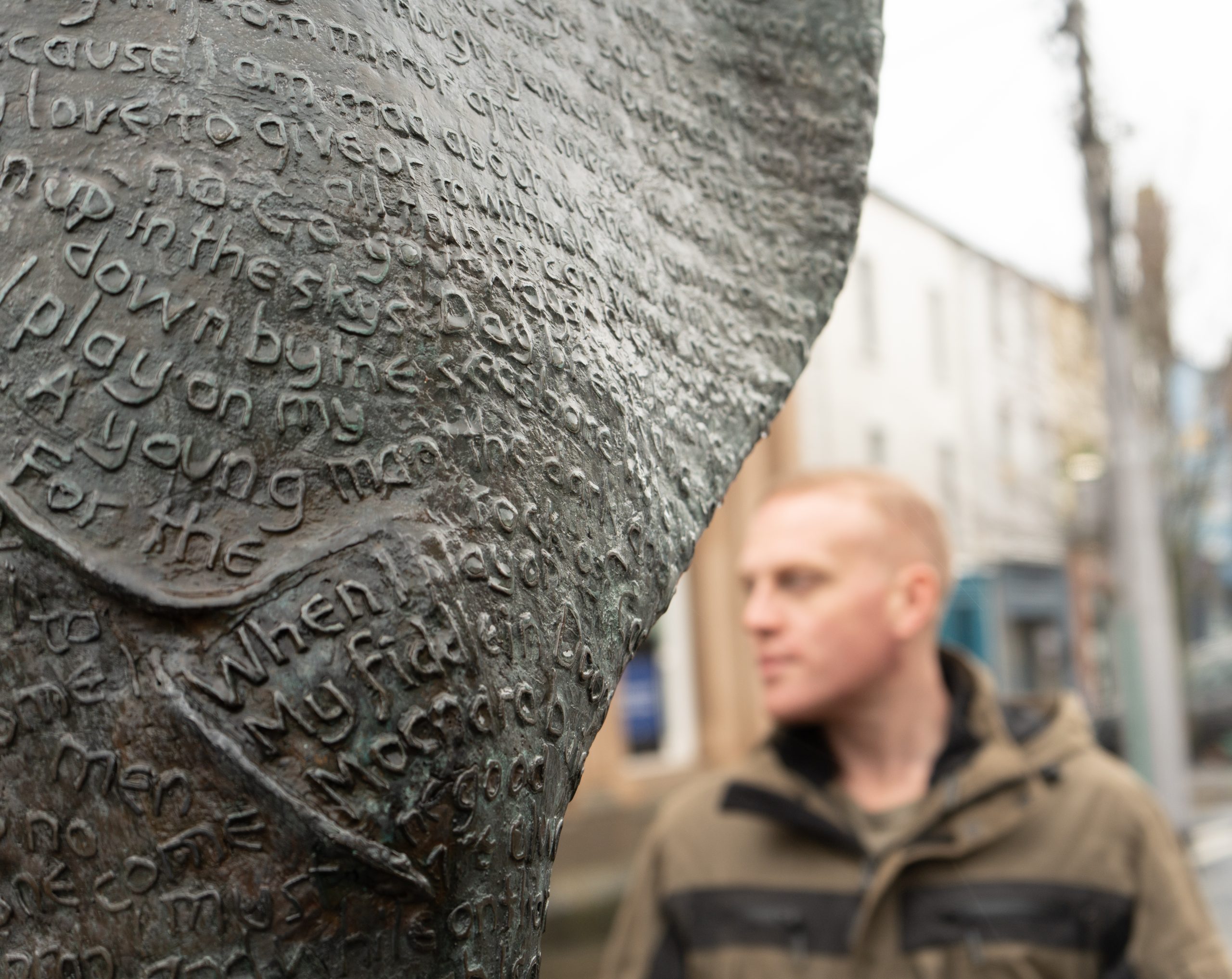
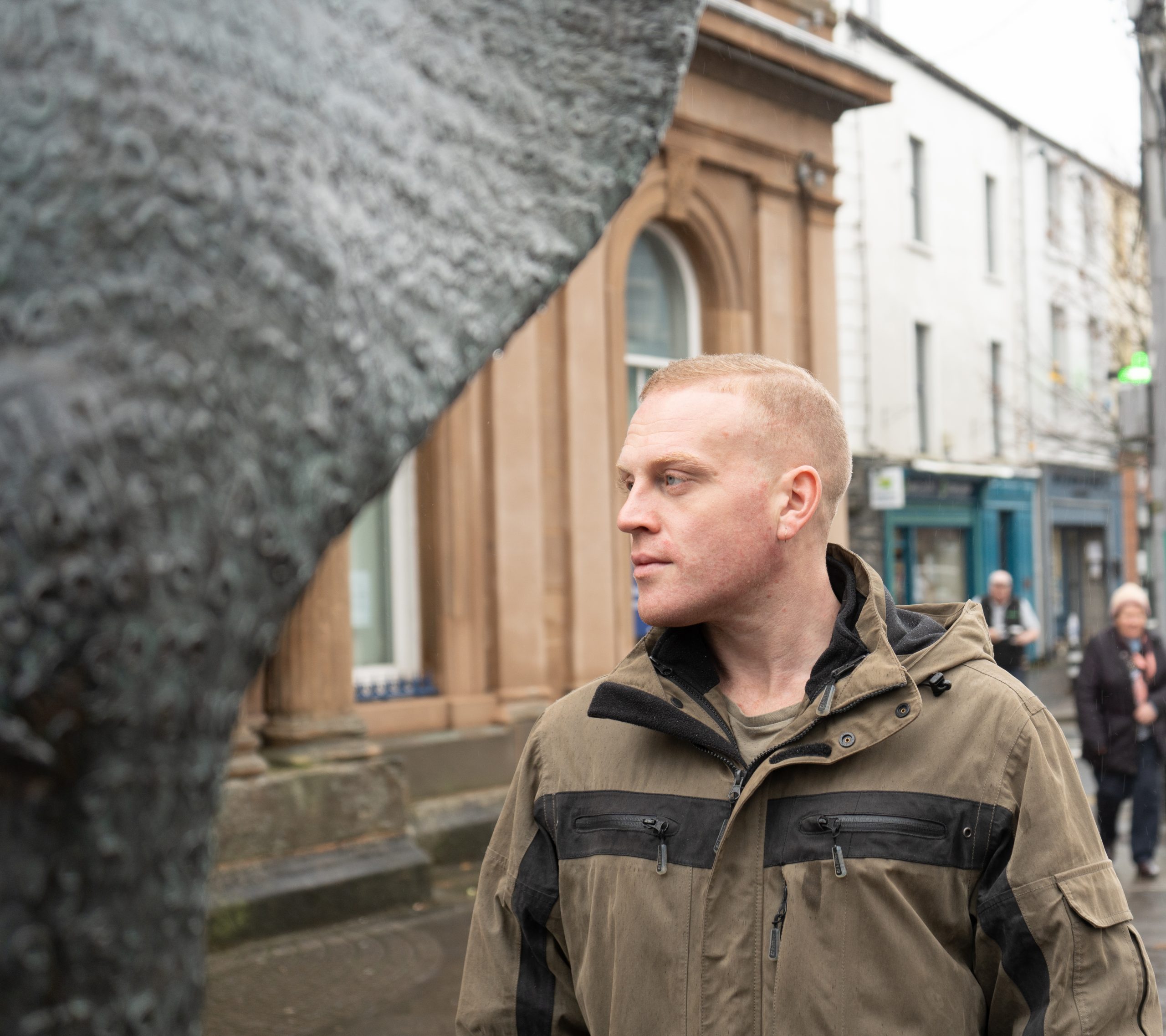
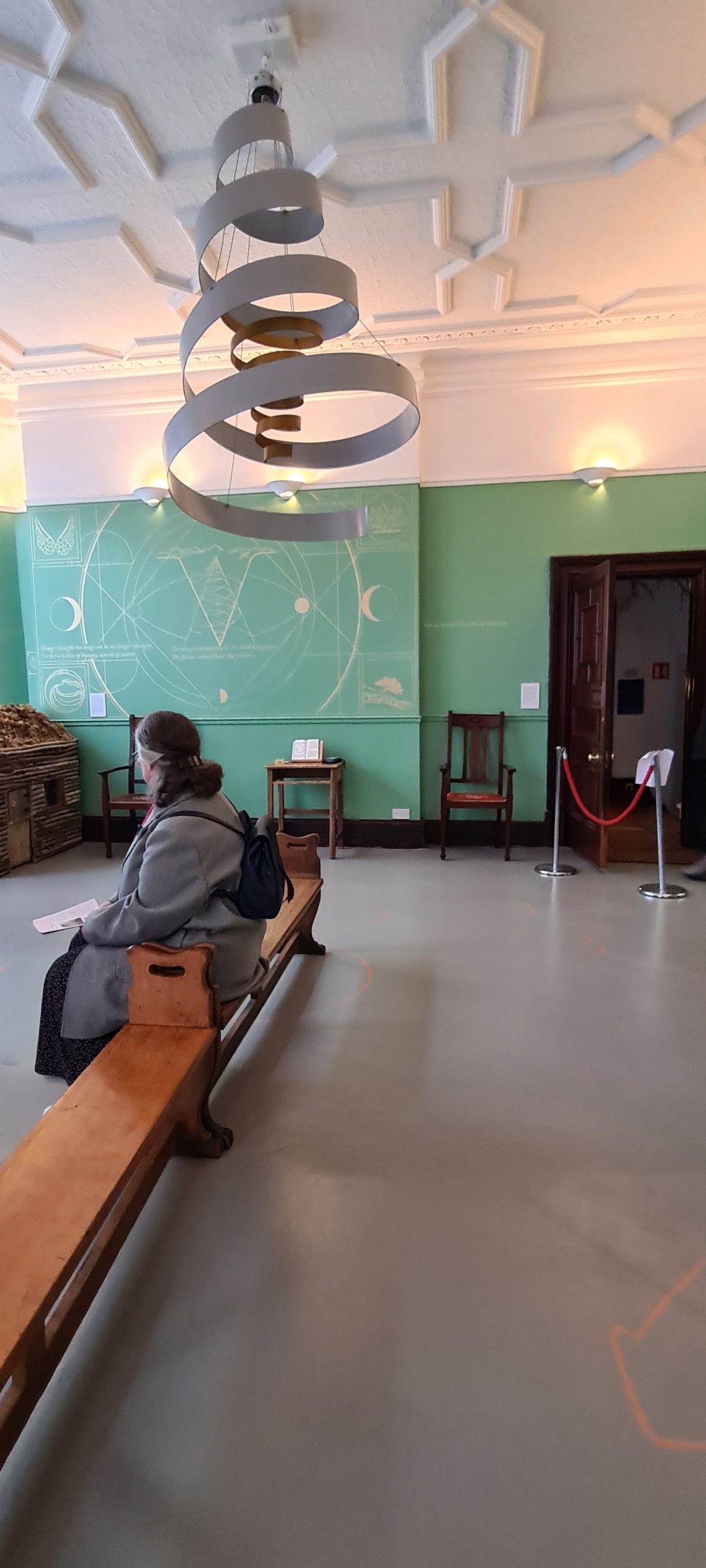
The walls have quotes. Billy liked this quote, which Yeats wrote as his mantra for life: "hammer your thoughts into unity". This caught my eye: "Each age unwinds what another age had wound". Haha, that is the generational differential 😀 ! The latter quote it seems is from 'A Vision' where Yeats focuses on the city of Byzantium and its symbolic unity of all aspects of life.
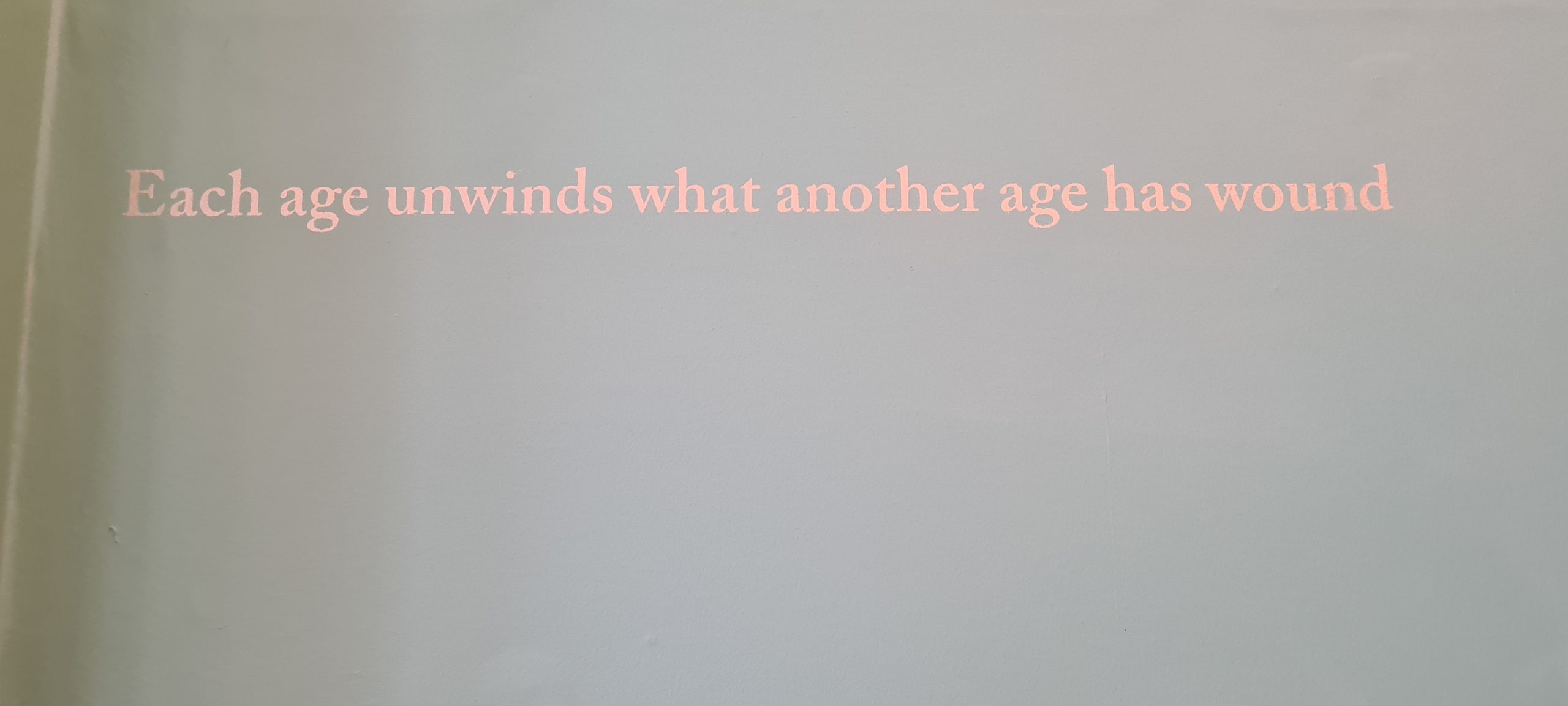
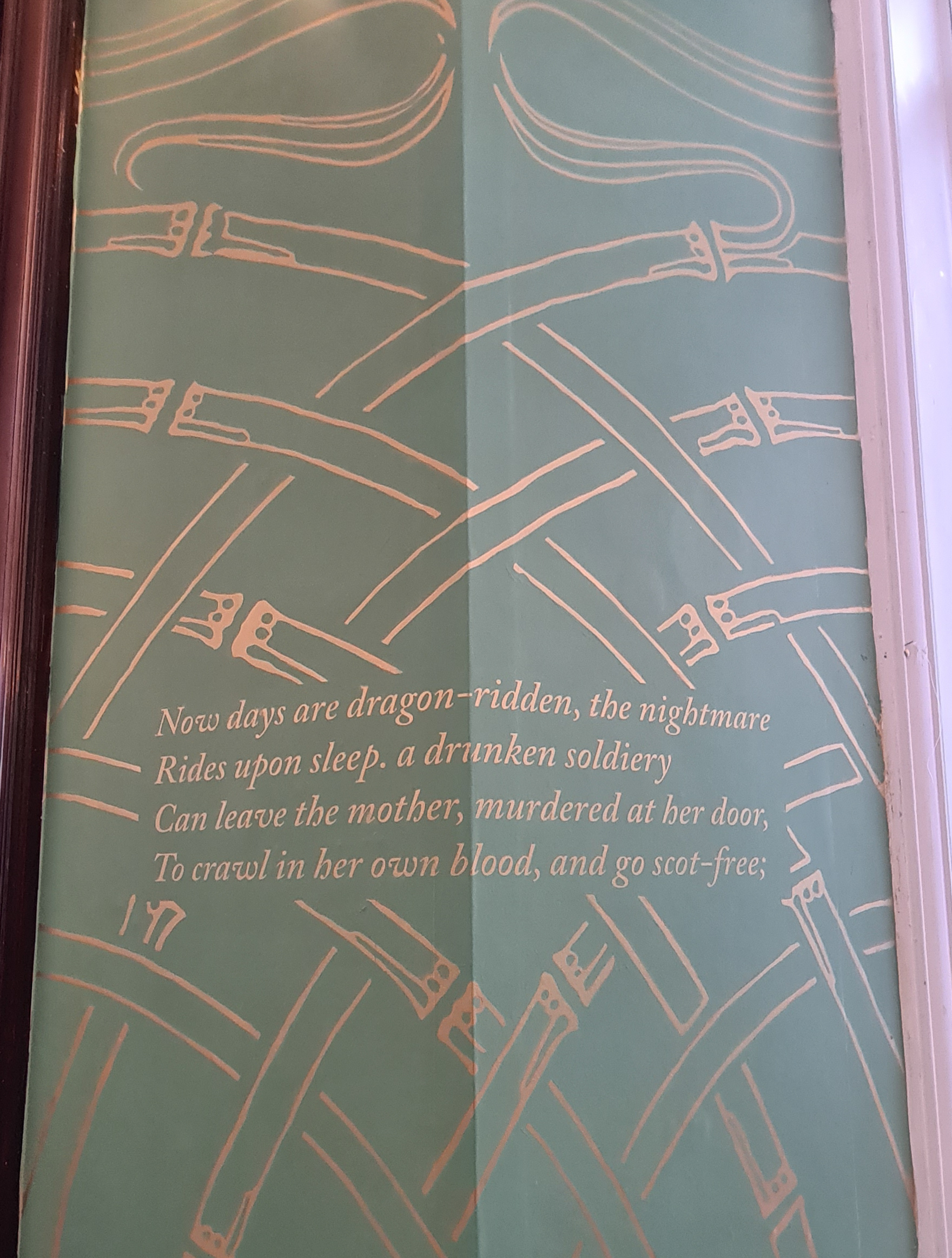
The above prophetic poem extract (on the wall at the Yeats Society Sligo) is from from Nineteen Hundred and Nineteen: "The poem paints the picture of the Irish Civil War which took place during the twentieth century with painfully mixed feelings about the war. Yeats has chosen the title aptly to substantiate his view, for it is the year in which the Anglo-Irish War began" LINK. Here is a longer extract:
Below is from the Curators note under the above extract:

Over next few days read some of Yeats poems, including A Prayer for my Daughter and The Stolen Child.
Drumcliff Cemetery, visited Monday 20th November, the final resting place of Yeats has his epitaph from the poem, 'Under Ben Bulben', the latter mountain can be seen in the second and third photos below. His epitaph (next photo) shows he had a sense of humour; this might be interpreted as an injunction not to take life too seriously. Overall, I was left feeling very impressed with his range and the fact his words on war and politics are relevant now.
